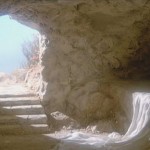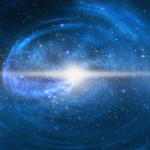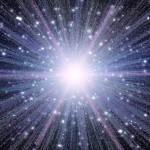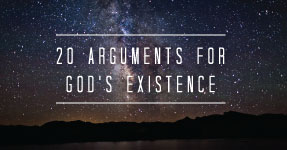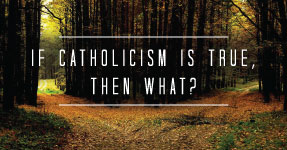Big Bang or Big Bloom?
by Dr. Benjamin Wiker
Filed under Cosmology
In science today, we are under the tyranny of an image, the image of an explosion—the Big Bang. Ironically, this term was not derived from evidence but from contempt. Sir Fred Hoyle (1915-2001), the celebrated astronomer, was so incensed at the notion that the universe might have a beginning that he began to refer to proponents of this view as believing that the universe started in some kind of a “big bang.”
He was quite surprised when the fires of his sarcasm, rather than withering his opponents, inadvertently coined the now commonly accepted term.
Interestingly enough, the astronomy magazine Sky and Telescope had a contest in 1994 to rename the Big Bang. There were over 10,000 entries, but the judges were unable to find a more golden term to coin. Thus, they declared the “Big Bang” it shall remain.
But what if the Big Bang was really a Big Bloom—not an enormous explosion, but a rapid and wondrous unfolding like a flower emerging from a densely-packed bud? Then the term “Big Bang” would be disastrously inaccurate. Happily, scientists are gathering more and more evidence that Bloom should replace Bang as the most accurate image of our cosmic origin.
To give ourselves a metaphor, imagine being invited to two events. The first is called “The Big Bang: See a House Blown Up!” You arrive at the address, a house sitting in a field, and settle into a lawn chair a comfortable distance away. The host announces: “Behold! The Big Bang!” and immediately the 3-bedroom brick farmhouse explodes into a cloud of smoke. As the wind slowly dissipates the smoke, you see a large pile of debris—glass shards, jagged pieces of wood, broken bricks, and dust.
The second event is called “The Big Bang: See a House Blown Up!” You arrive at the address, fully expecting a repeat, but in the field, instead of a house, you find a large pile of debris—glass shards, jagged pieces of wood, broken bricks, and dust. You settle into your lawn chair a little bemused. Just then, the host announces: “Behold! The Big Bang!” and immediately the pile of debris explodes into a cloud of smoke. As the wind clears away the smoke, you see a 3-bedroom brick farmhouse.
Obviously the first event conforms to what we mean by “bang,” because an explosion increases disorder (what scientists call “entropy”). But what of the second event? There was an explosion, but we would justly accuse the second host of great irony in the use of the term and great cleverness in his use of explosives. Obviously, he somehow rigged the whole thing in the finest detail, and we would rightly conclude his mastery of physics, chemistry, and architecture bordered on the divine.
Now what if you received an invitation: “The Big Bang: See the Universe Blown Up!” What would you witness? As it turns out, the more scientists dig into the complexities of the cosmos, the more it appears to be like the second event.
The evidence? To begin with the beginning, if the universe originated in an explosion, it was very precisely and very suspiciously calibrated down to the finest details. And further, this cosmic fine-tuning seems to be defined by a goal, the eventual existence of complex, biological life. Indeed, scientists are going even further, and arguing that the fundamental laws and forces of nature, the chemical elements and basic compounds, the 3-dimensionality of space, and more, all lead to the strange and welcome conclusion that we may well be the goal of the universe. Thus, the science of cosmology has become not just biocentric, but anthropic (from the Greek anthropos, human being).
If we could replay the cosmic tape, then, we would not see a chaotic explosion that merely scatters debris, but a well-orchestrated unfolding, a Big Bloom governed by humanly unimaginable precision. If the Bloom were compressed into a fourteen-minute tape, the first third of a minute would be dark and brooding anticipation, like the buds of flowers waiting to burst. Suddenly, there would be blinding light, and the first stable elements that had been kneaded in darkness, would emerge as the initial unfolding of the infinitely dense original bud. Over the next ten minutes, we would see the universe bloom at the speed of light, expanding in every direction even as the elements swirled and condensed into the first stars, the fiery furnaces that would forge the heavier elements needed for the ultimate intricacies of complex life.
Near the end of this phase, we would see our own solar system form. In the last three minutes of the tape, we would witness a dizzyingly rapid crescendo of creation upon Earth, with the most intricate, spiraling integration of biologic complexity in the last half minute, as species after species of living being arose, bursting forth with staccato regularity in every imaginable form occupying every imaginable nook. In the last fraction of a fraction of a second, human beings would arrive, somehow the crown and glory of the bloom, the only known creature capable of science.
Scientists now admit, almost universally, the existence of the fine-tuning that allows the bang to end in a bloom. The commonsense conclusion: our universe was “rigged” from the beginning by a very clever Master of physics, chemistry, and architecture. As physicist John Polkinghorne has said, such cosmological fine-tuning means that “the universe is indeed not ‘any old world’ but the carefully calculated construct of its Creator.”
Others resist the commonsense conclusion that the theologians were right all along. Some, like Sir Martin Rees, Astronomer Royal at Cambridge, avoid this conclusion only by exchanging commonsense for nonsense, and conjecturing that there are a multitude of universes, and we just happen to be the lucky one.
Let us hope that, as more and more evidence of the extraordinary, providential ordering of the universe and earth itself is uncovered, that common sense will prevail.
Related Posts
Note: Our goal is to cultivate serious and respectful dialogue. While it's OK to disagree—even encouraged!—any snarky, offensive, or off-topic comments will be deleted. Before commenting please read the Commenting Rules and Tips. If you're having trouble commenting, read the Commenting Instructions.






